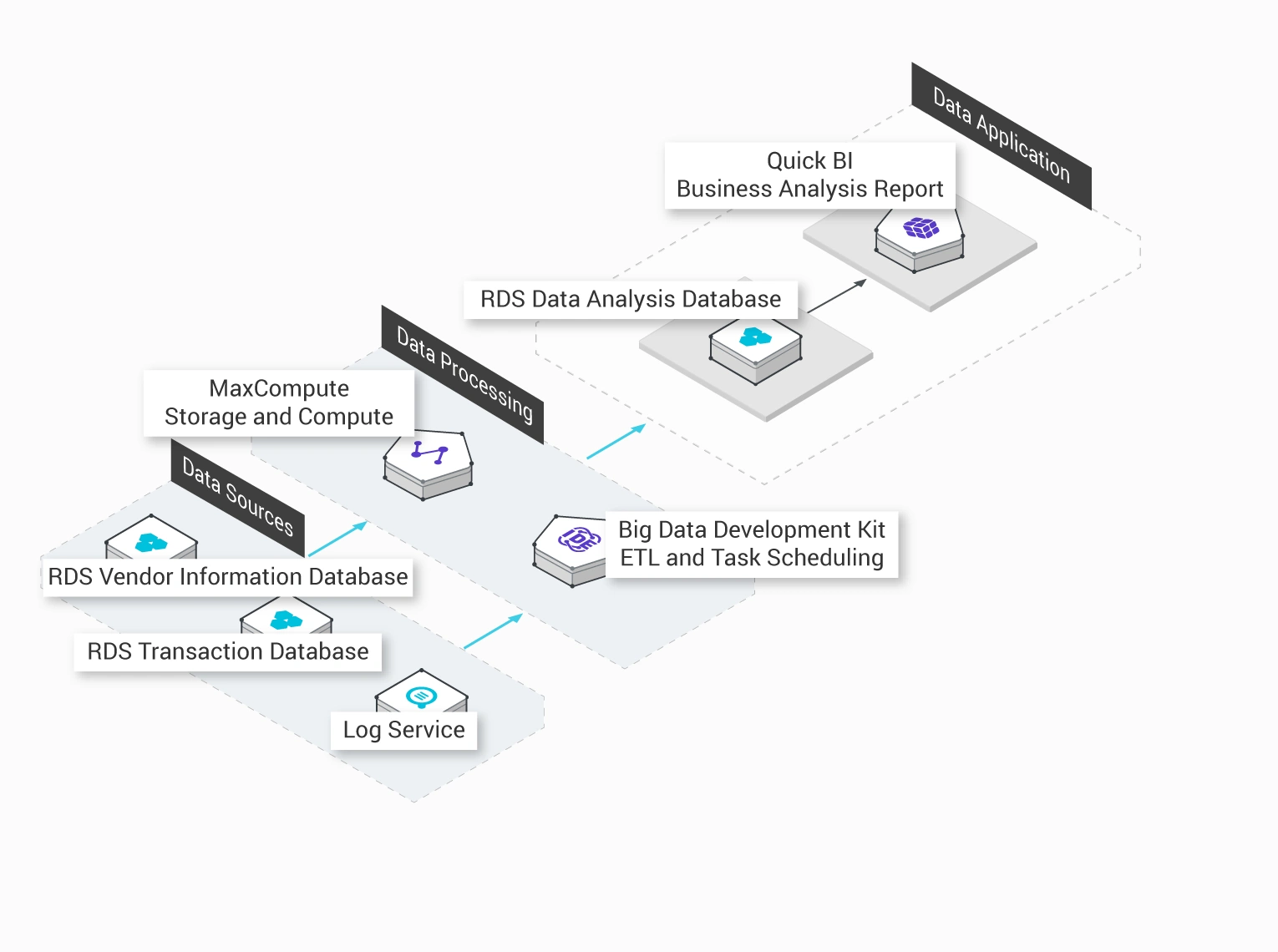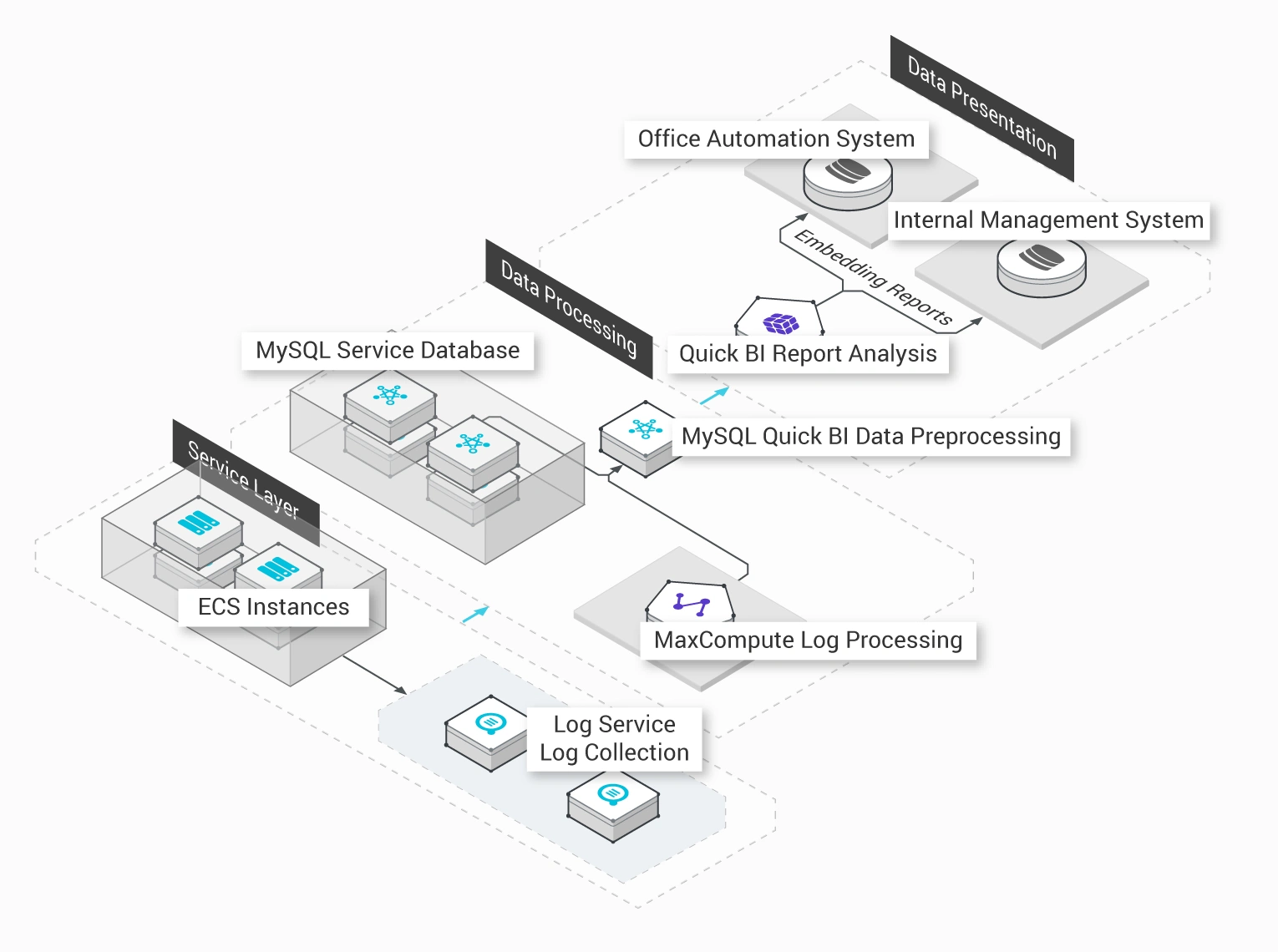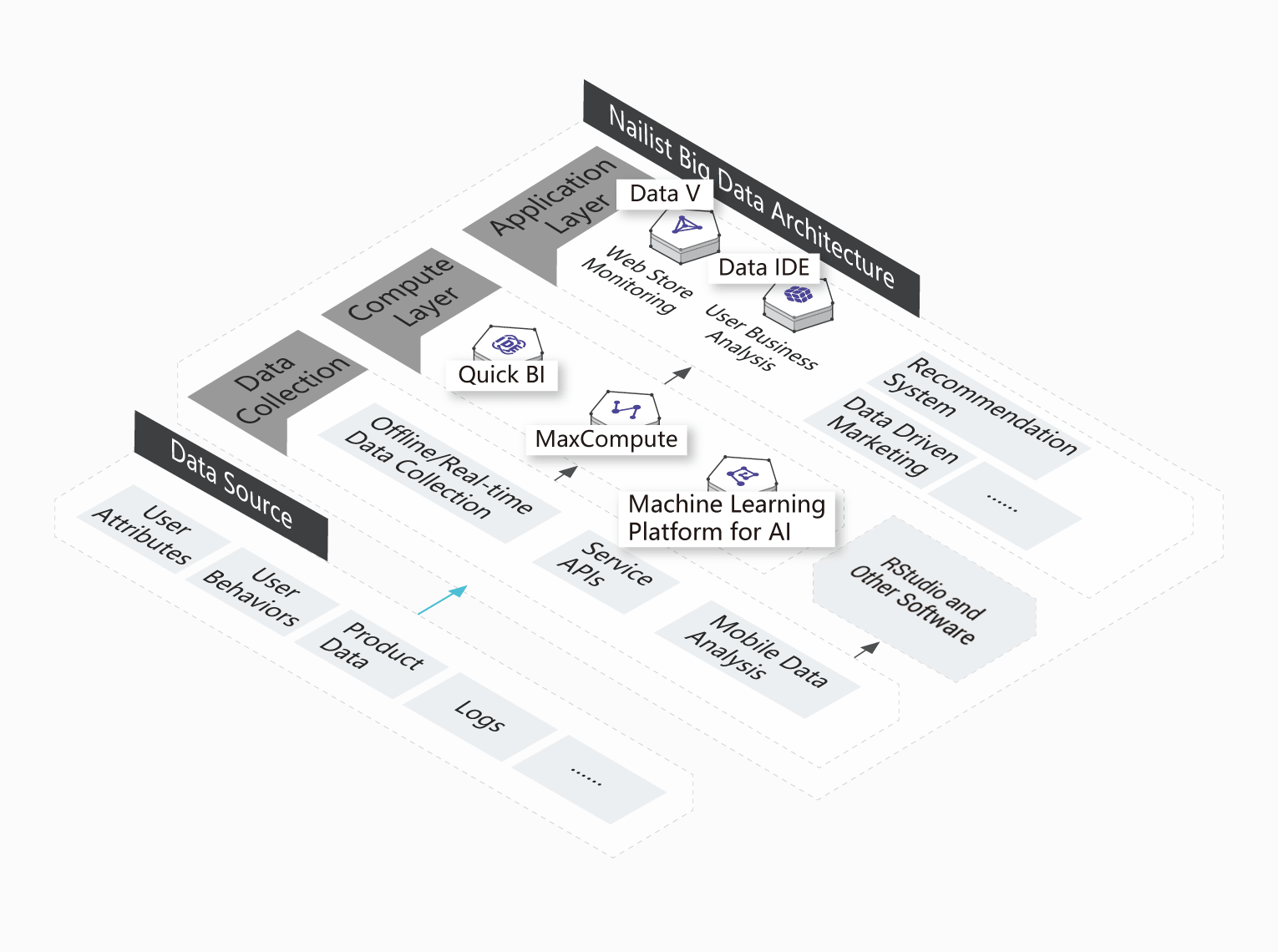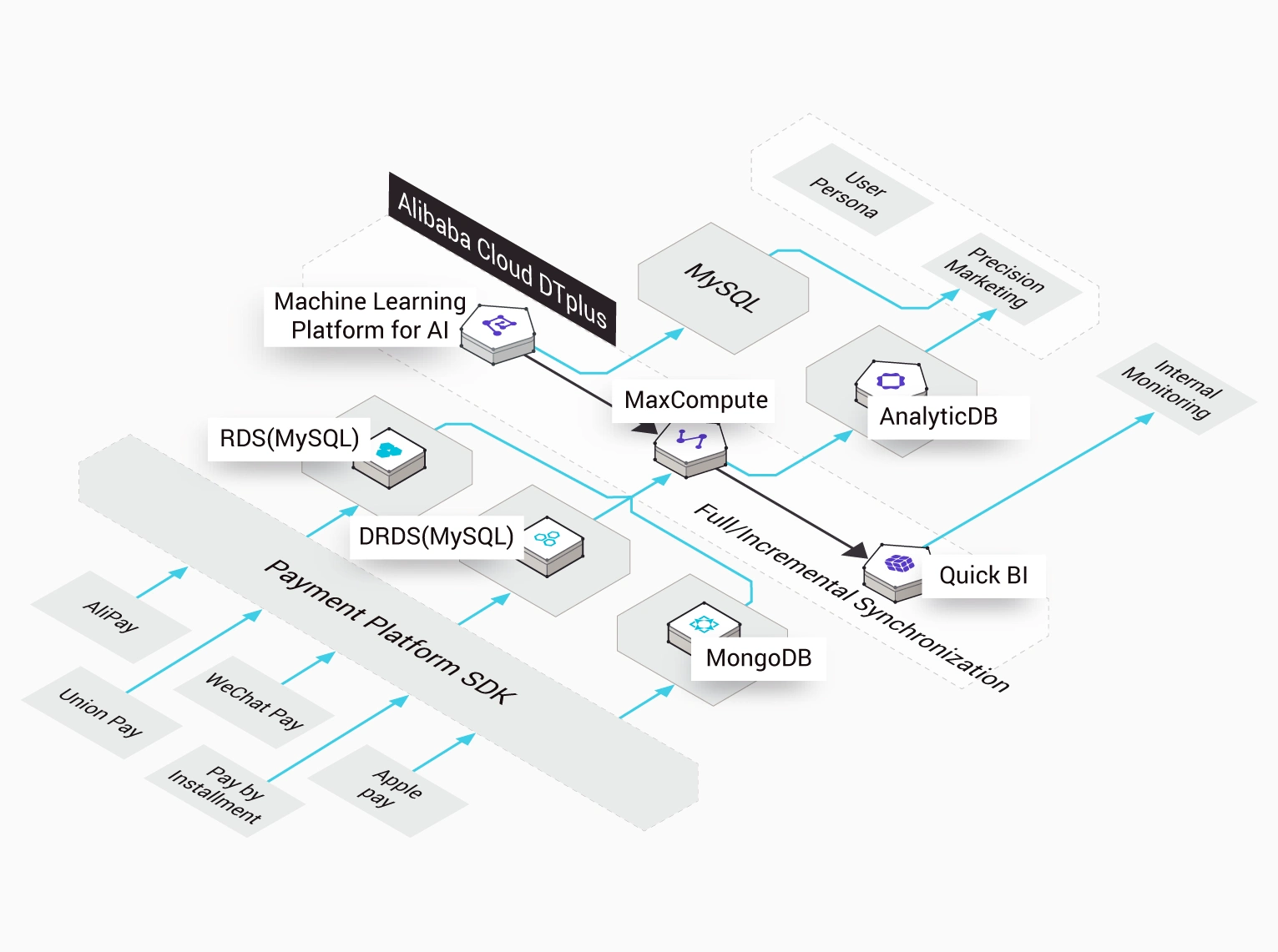 Multi-cloud data connection
Multi-cloud data connection Data modeling: SQL Statement modeling/drag-and-drop modeling
Data modeling: SQL Statement modeling/drag-and-drop modeling Data visualization
Data visualization
 Full-scenario data analysis: data connection, data visualization, spreadsheets, ad hoc analysis, big data downloads
Full-scenario data analysis: data connection, data visualization, spreadsheets, ad hoc analysis, big data downloads Open integration capabilities: custom components, open API
Open integration capabilities: custom components, open API
 Chat BI:Analyze data using natural language
Chat BI:Analyze data using natural language  BI Copilot:Build dashboards using natural language
BI Copilot:Build dashboards using natural language Analysis Agents:Data interpretation, data prediction, data diagnosis
Analysis Agents:Data interpretation, data prediction, data diagnosis
QuickBI helps enterprises and individual users build data analysis systems through various data analysis and visualization capabilities. Using Quick BI to create beautiful dashboards, spreadsheets with complex formats, and download billions of data. Reports can be integrated into user's business processes and shared with colleagues and partners via email, DingTalk, corporate WeChat, etc.
Benefits

-
Seamless Integration of Cloud Data
Supports multiple data sources, such as ApsaraDB for RDS, AnalyticDB, MaxCompute, MySQL, SQL Server, and local files.

-
Quickly Builds Data Portals
Provides drag-and-drop operations, powerful data modeling, and data visualization to help you build data portals quickly.

-
Flexible Embedding into Third-party Systems
You can embed the Quick BI dashboard into your own third-party systems and use it to view the reports and charts directly.

-
Full Control of Data Access Permissions
You can set the access permissions for individual rows so that the same report is displayed differently for each user role.
Features
-


Data sources
Connects to a wide range of data sources, including MaxCompute, RDS (for MySQL, PostgreSQL, and SQL Server), Analytic DB, HybridDB (for MySQL and PostgreSQL). Provides a standard interface for retrieving the metadata and data of data sources.
-


Data modeling
Supports OLAP modeling of data sources, and converts data sources to multi-dimensional analytics models. Supports semantics such as dimensions (dates and locations), measures, star schema, and snowflake schema. Allows you to define calculated fields. The product allows you to edit the existing SQL script of the data source to customize your dimensions and measures.
-


Dashboards
Enables users to build dashboards with visualization components. Supports 17 chart types, including line, pie, column, funnel, hierarchy, bubble geo, geo, and card. Also allows users to insert filter bars, TAB pages, iframe content, and text areas in the form of widgets as well as link multiple charts.
-


Workbooks
Allows users to perform analytics in a spreadsheet environment. Supports row-based and column-based filters, basic and advanced filters, subtotals, auto-sum, and conditional formatting.
-


Portals
Allows users to build portals from dashboards in a drag-and-drop manner. Supports embedded links (for dashboards), templates, and menu structures.
How it works
-
Data Analysis and Effective Decision-making

-
Access Control of Transaction Data

-
Flexible Integration with Private Systems

-
User Behavior Analysis

-
Data-driven Marketing

-
Analysis of Large Amounts of Marketing Data

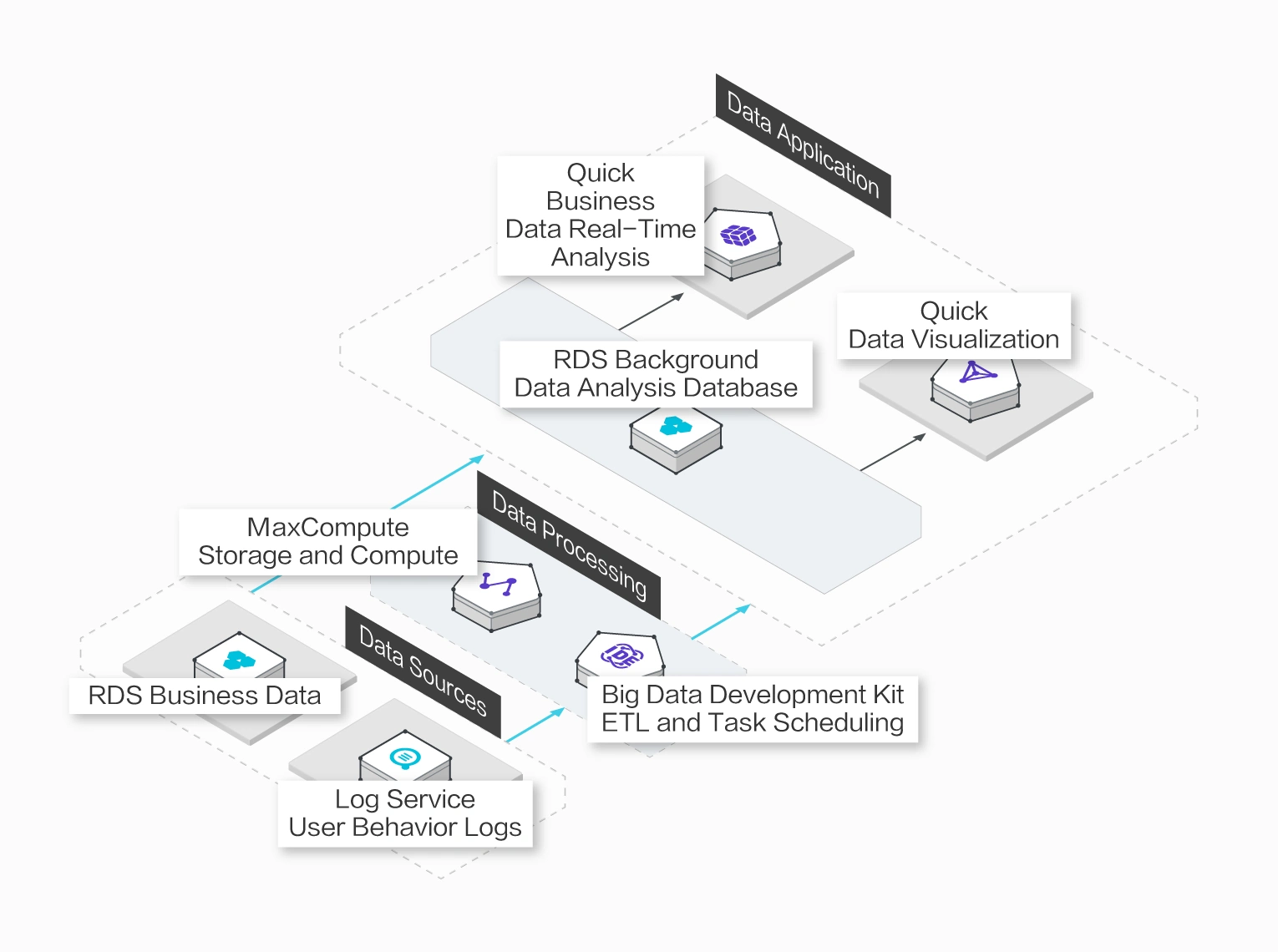
Scenario One Qinsi Tech
Dynamic data analysis and effective decision-making
In data-driven business operations, we often need to create analysis reports based on data such as the customer retention rate and the number of active users. Quick BI is easy to use and provides multiple data presentation techniques that support dynamic data analysis and effective decision-making.
Challenges
-
Difficult data extraction
For better decision-making, business managers often need to ask technical staff to write SQL statements in order to extract data based on different conditions.
-
Inefficient reporting and high maintenance
The analysis system is difficult to develop and maintain, and generates reports with low efficiency.
-
Poor visual design and high manpower costs
Reports that are created with tools such as HighChart have a poor visual design and require high manpower costs.
Upgraded Support For You
1 on 1 Presale Consultation, 24/7 Technical Support, Faster Response, and More Free Tickets.

1 on 1 Presale Consultation

24/7 Technical Support

6 Free Tickets per Quarter




